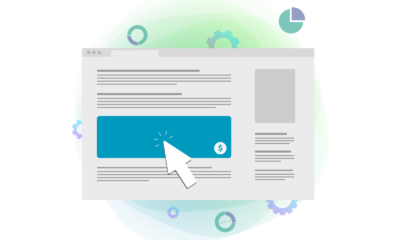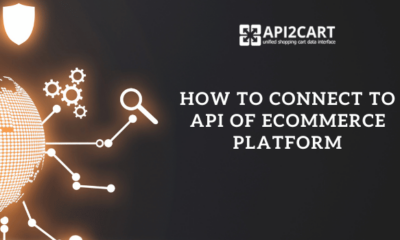Over the past couple of years, research firms Gartner, Forrester, and others have heralded the arrival of digital experience platforms (DXPs); the future is now and all that (for a DXP primer, you might enjoy Pamela Parker’s article). But practically speaking, is there such a thing as a digital experience platform? As Tony Byrne of the Real Story Group (and a MarTech contributor) said in 2018, referencing Gartner’s Magic Quadrant for DXPs, put it: “No enterprise digital leader in her right mind would actually purchase ‘digital experience’ as a platform. DX is a strategy and approach, and no single platform or vendor on this chart will get you there.”
Digital experience platform evolution
The days of monolithic all-in-one platforms are fading. Marketing technology vendors are moving toward “composability,” which offers marketers the freedom of choice they want by selecting best-of-need products that best suit their marketing organization and business needs. This is a shift from the monolithic approach, where companies rely on a single vendor for their system. Of course, the single-vendor method might be suitable for the procurement folks, but it can introduce risk to the business, as I discussed in this article. Plus, in many cases, customers are not getting the full breadth of features, functionality and ROI from their single-vendor martech investments.
An early example of DXP evolution comes from web content management (WCM) vendors, creating complex suites that combine features of WCM, digital asset management (DAM), portal, personalization, analytics, and more. In some cases, these “integrated” suites are natively nothing more than a collection of acquired point solutions that form what the vendor calls a digital experience platform.
Stitching those disparate products together to create a unicorn solution is an integration partner’s dream but, in too many cases, a CMO’s nightmare. The work can be complex, time-consuming and expensive, and the results frequently fail to deliver on the promise. In the 2021 CMSWire State of Digital Customer Experience report, 80% of the 1,300+ digital customer experience execs surveyed responded that their digital experience was “very” to “extremely important” to their organizations. That said, only 11% believed their tools were “working well,” while 42% said their tools “need work.”
Introducing composability
An excellent example of composability in action is the evolution of the legacy content management system (CMS). The monolithic CMS integrates content, images, HTML, and CSS and provides a Graphical User Interface (GUI) to help non-technical users create and publish content. Unfortunately, it’s virtually impossible to leverage a content re-use strategy since code and content are combined.
To remedy this problem and provide developers with a composable method of flexing their innovation chops, vendors introduced the decoupled CMS. This flexible front-end and structured back-end model promoted faster development, redesigns, upgrades, and new site rollouts, leaving content and development teams to work independently and more efficiently. In this CMS incarnation, the front and back ends are separate, which means developers could try new frameworks and tools without impacting the site’s content.
Then came the headless CMS, a back-end-only solution that stores content and distributes it via RESTful API. Using a headless approach, marketers could syndicate centrally-managed content to websites, mobile apps, digital signage, car dash displays, or other endpoints. There’s no presentation layer provided with a headless CMS, leaving developers the latitude to handle presentation in whatever way best suits the requirements du jour.
Meanwhile, throughout this evolutionary process, the need to create and manage remarkable customer experiences to acquire, convert, and retain customers continued to explode. The lines between decoupled and headless blurred, and even monolithic CMS offerings began to morph. Legacy CMS vendors returned to the drawing board while innovative new players entered the market. More martech vendors were adopting the concept of composable solutions.
Composable DXP adoption: Resistance is futile
The aggressive push to drive DXP adoption is underway, and it’s working. Global research and consulting firm Verified Market Research says the Global Digital Experience Platform Market size was valued at USD 15.88 Billion in 2020 and projected to reach USD 43.43 Billion by 2028, growing at a CAGR of 13.4% from 2021 to 2028.
However, along with all the hype, there’s some confusion. Gartner defines the DXP thus: “A digital experience platform (DXP) is an integrated set of core technologies that support the composition, management, delivery and optimization of contextualized digital experiences.” But as mentioned above, there’s a big question; should those “core technologies” be integrated into a monolithic, all-in-one platform, or should the “core technologies” be represented by a collection of point solutions assembled on a best-of-breed basis?
Composability and the martech stack
Over time, some legacy CMS vendors like Sitecore, Optimizely (formerly Episerver) and Progress Software’s Sitefinity have reinvented their platforms to fit into a DXP box, while newcomers like Contentful, Contentstack and Storyblok are driving in new directions. One thing is sure; it looks like composability is here to stay.
The concept is even finding its way into the board room as a future-proof schema for the post-COVID enterprise. Gartner says, “Composable business means creating an organization made from interchangeable building blocks. The modular setup enables a business to rearrange and reorient as needed depending on external (or internal) factors like a shift in customer values or sudden change in supply chain or materials.”
Gartner identifies three building blocks of the composable business: composable thinking, composable business architecture and composable technologies. COVID seems to have accelerated this model in companies that may have lagged in building out their functional digital knowledge and martech muscles.
Get the daily newsletter digital marketers rely on.
Modular is better
Building modular, or composable, technology stacks has always been a great idea, though early on, it wasn’t as palatable as it is today. Plus, as I’ve said here, there’s been some advancement of functional digital knowledge in many organizations that’s driven new ways of thinking and working, including selecting various best-of-need martech tools from different vendors to build out the martech stack.
As Mark Demeny, director of product management at Optimizely, says, “Dealing with one vendor is perhaps a little bit safer. For example, the customer can work with one vendor and one renewal cycle instead of six. But while it’s easier for procurement, it may not be easier from an implementation perspective, depending on how well the martech vendor has assembled its product offering. Ultimately, it comes down to the preference of the buyer and the skill set of their organization.”
Keep in mind that things could get complex — expensive — when rolling your own composable DXP. In fact, according to Real Story Group’s Byrne, some customers “are spending 2-6x more on initial implementation services than they do on licensing costs. Same for outbound marketing and e-commerce projects. SaaS vendors with more productized, multi-tenant solutions talk about ‘quick start’ projects with light professional services fees, but the ‘MVPs’ that results tend to be long on the M and light on the V.”
Read next: Does your marketing team need a digital experience platform?
Avoiding the composable DXP trap
To increase your chances of success and reduce risk when building out your composable DXP, consider the following:
Choose your best-of-need solutions carefully. That includes following the advice in this article, including:
- Understand your long-term priorities and those of your chosen martech vendor(s). For example, are they focusing on innovation, growth, and new customers, or are they focusing on keeping existing customers happy and prosperous?
- De-couple software from services. Sure, the vendor might offer hosting or implementation/consulting services, but that doesn’t necessarily mean they are the best fit to deliver those services for your organization.
- Always be thinking about a migration strategy. Composable means flexibility, but even upgrades can require a lot of planning, consideration, and cost. Stay on top of the constantly shifting market by researching and engaging with new vendors on a monthly (or bi-monthly) basis. That’ll help you keep your finger on potential products and services that are fit-for-purpose in your composable DXP stack.
Choose your outside consultants carefully. While vendors may provide professional services, they usually focus on implementing own their products and services.
- Know before you go. “Whenever you start a technology project, get clear about what you need from any outside consultants. There’s a good chance you may need various ‘soft skills’ such as information and process analysis, user experience, and change management, along with migration support.” says Real Story Group’s Byrne. Consider conducting a standardized review to understand the available individual and team skills and experience required to build and use a composable DXP. This will not only help you determine current skills and skill gaps but prepare hiring managers for potential recruiting and the outside consultant selection process.
- Make sure they’ll focus on your best interests. Luma Partners 2021 Full Year Market Report showed strong growth in martech M&A deals, springing back from pandemic lows to achieve a 95% YoY growth. With big deals come big expectations from investors, often translating into mandates of 40-50% growth per year. A fierce quest for revenue might make one partner hyper-focused on your needs and another on their own. Mitigate potential risk and exposure by doing your homework, including reviewing the partner’s financials.
- Pick composable tools first. Most services partners you’ll engage with are themselves partnered with several martech vendors. These relationships often involve commissions or co-op funds for advertising and events based on sales by the services partner of the martech vendor’s products. Thus, the outside consultant might have a vested interest in recommending specific products or services. Before choosing a service partner, prudence dictates developing solid business and technology requirements and performing vendor research (including demos and a proof-of-concept) to select your composable DXP components. As Byrne says, “If changing integrators is like switching plumbers, then changing vendors is like remodeling your bathroom completely. Get a blueprint, select the fixtures, then find the plumber.”
The composable DXP for the win
For companies and their marketing organizations seeking a way to create, deploy, and manage remarkable customer experiences, the composable, modular DXP can be a desirable approach. Instead of leveraging only 10-15% of the features and functions of an all-in-one solution, consider point solutions that best meet your business, marketing, and technology needs.
A purpose-built composable DXP can evolve with your business, customers, industry, and the endless shifting martech landscape. Once that’s in place, the focus can shift to creating remarkable composable customer experiences. But that’s another article.

Explore platform capabilities from vendors like Sitecore, Optimizely, Pantheon, WordPressVIP and more in the full MarTech Intelligence Report on digital experience platforms.
Opinions expressed in this article are those of the guest author and not necessarily MarTech. Staff authors are listed here.















![YouTube Ad Specs, Sizes, and Examples [2024 Update] YouTube Ad Specs, Sizes, and Examples](https://articles.entireweb.com/wp-content/uploads/2024/06/YouTube-Ad-Specs-Sizes-and-Examples.jpg)
















You must be logged in to post a comment Login